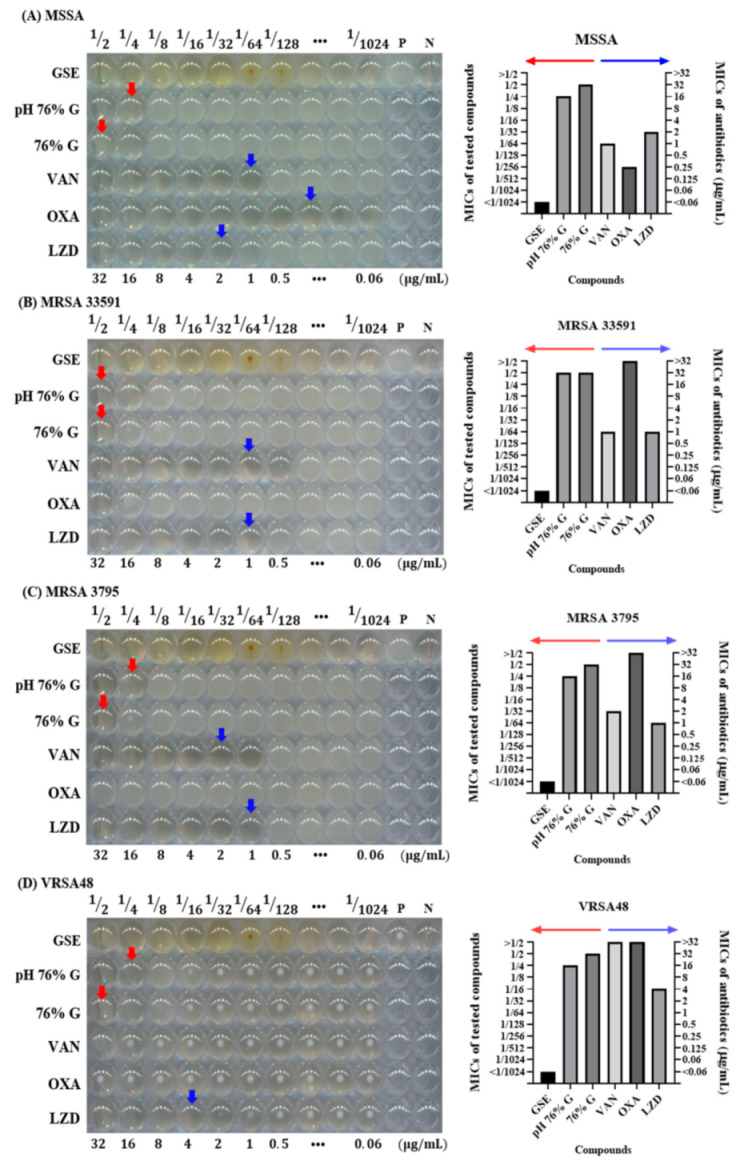Figure 4.

Microdilution minimum inhibitory concentration (MIC) tests for compounds and antibiotics tested against MSSA, MRSA, and VRSA. (A) S. aureus ATCC 6538 (MSSA), (B) S. aureus ATCC 33591 (MRSA), (C) S. aureus CCARM 3795 (MRSA), and (D) VRSA48. P is a positive control without any antimicrobial agents, and N is a negative control with only media and DW. In the 96-well plate, from left to right, the tested compound concentrations were 1/2 to 1/1024, and the concentrations of antibiotics were 32 to 0.06 µg/mL. The MICs of pH 76% G and 76% G are indicated by red arrows, and those for antibiotics are indicated by blue arrows. MIC values <1/1024 or >32 µg/mL are not indicated by arrows. The MIC values of the tested compounds and antibiotics for each of the bacterial strains are also illustrated by bar graphs next to the 96-well plate figures. In the bar graph, the MIC values of the tested compounds can be read along the left y-axis indicated by the red arrow, and the MIC values of antibiotics along the right y-axis are indicated by the blue arrow. MRSA 335591 and 3795 showed OXA MIC values >32 µg/mL, confirmed to be MRSA, and VRSA48 also showed MIC values >32 µg/mL for OXA and VAN, confirming VRSA. The GSE showed MIC values of <1/1024 concentration for all tested bacteria. Excluding MRSA 33591, pH 76% G showed an MIC value (1/4 concentration) lower than 76% G (1/2 concentration), but it was still insufficient to explain the antibacterial effect of GSE.
